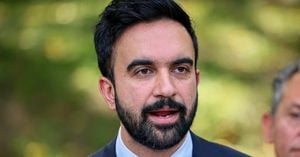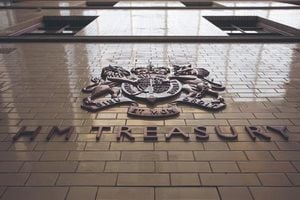In Cuba, the sun is an abundant resource, shining down on every rooftop and field. Yet, for most Cubans, harnessing its energy remains out of reach. As the island grapples with a crippling energy crisis—marked by daily blackouts that can stretch for hours—solar power has emerged as a beacon of hope. But in a twist that stings with irony, this path to progress is now a symbol of deepening social inequality.
According to the state-run newspaper Girón, Cuba needs to generate more than 3,600 megawatts of electricity each day just to keep the lights on and daily life moving. But the reality is stark: demand far outpaces what the country’s aging and overburdened grid can supply. The result? Frequent, prolonged outages that disrupt everything from cooking and washing to keeping food from spoiling in the fridge. For millions, these basic activities have become luxuries, entirely dependent on the fragile ebb and flow of the national electric system.
Amid this turmoil, the Cuban government has staked its hopes on a rapid buildout of solar energy. Officials have announced that by the end of 2025, a total of 51 solar parks will be up and running across the island, with 32 already synchronized to the National Electric System (SEN) as part of an emergency strategy to address the crisis. Cuban leader Miguel Díaz-Canel recently emphasized that the program to install photovoltaic parks is ongoing, asserting that "thanks to these investments, the energy deficit has been smaller."
Yet, on the ground, the story is more complicated. While the government touts its commitment to renewable energy, most Cubans are still left in the dark—quite literally. The reason? Access to solar panels and the equipment needed to tap into the sun’s power is anything but universal. The necessary gear is imported and must be paid for in foreign currency, a daunting hurdle in a country where most people earn their wages in Cuban pesos. A basic photovoltaic kit, capable of powering a modest home, can cost more than a thousand dollars—an impossible sum for families scraping by on state salaries.
For a small but growing minority, however, solar panels have become a lifeline. According to local resident Juan Carlos Subiaut Suárez, this year has seen a noticeable uptick in the installation of residential solar systems and hybrid off-grid generators. This trend, he notes, is largely driven by small and medium-sized businesses and by shipping sites that import components from abroad. But Subiaut is quick to point out the limits of this phenomenon: "Emergency energy technologies are neither cheap nor simple. There have already been reports of fires and explosions due to poor installations, as well as equipment with false data or insufficient protections," he warned, as reported by Girón.
Indeed, the risks are real. With many installations happening outside formal channels—often cobbled together with whatever parts can be sourced—the likelihood of technical mishaps is high. Faulty wiring, inadequate protection, and misleading product specifications have all led to dangerous incidents, including fires and explosions. For families who manage to scrape together the funds for a system, the fear of catastrophe is a constant companion.
Economic inequality, always a feature of Cuban society, is now being etched even more deeply by the solar divide. Those with access to foreign currency—often through relatives abroad or private enterprise—can buy a measure of energy security. The rest are left to endure the blackouts, their daily routines dictated by the whims of an unreliable grid. As one observer put it, solar panels, which should represent progress and autonomy, have instead become "a new symbol of inequality."
The government, for its part, has tried to address the accessibility gap. The Bank of Credit and Commerce (BANDEC) announced a credit program for the installation of solar systems on social media, raising hopes among ordinary Cubans. But as Adisbel Alfonso Pérez, another concerned citizen, discovered, the promise was hollow. "When you go to the BANDEC Business Center, no one knows how the process will be; they haven't been trained. It seems it was only to create expectations, another way to appease without achieving anything. Essentially, as the saying goes, it's 'smoke and mirrors'," she wrote, voicing the frustration of many who feel misled by official pronouncements.
Such stories are all too common. While the regime continues to promote the idea of an "energy transition," the reality on the ground is one of uneven progress, stymied by high prices, bureaucracy, and a lack of clear planning. The infrastructure and market for solar energy remain underdeveloped, and the absence of a stable regulatory framework makes it difficult to attract the private investment needed to modernize the national electrical system. The result is a patchwork of solar installations—some safe and effective, others potentially hazardous—serving only a privileged few.
This dynamic is not lost on ordinary Cubans. As one resident pointed out, "Access to renewable energy is marked by inequality and a lack of institutional transparency." The government’s efforts, while ambitious on paper, have yet to translate into meaningful relief for the majority. The continued reliance on outdated thermoelectric plants, coupled with chronic underinvestment, has left the system teetering on the brink. For most, the dream of energy independence remains just that—a dream.
Still, there are glimmers of hope. The growth in residential solar systems, though limited in scale, demonstrates the ingenuity and resilience of Cubans determined to carve out a measure of control over their energy future. Small businesses and individuals are finding ways, however imperfect, to weather the crisis. But without broader reforms and genuine support from institutions, these efforts will remain exceptions rather than the rule.
As Cuba looks toward the end of 2025 and the promised completion of its solar parks, the stakes could hardly be higher. The energy crisis has laid bare the vulnerabilities of the island’s infrastructure and the deep social divides that shape everyday life. Whether the government’s renewable ambitions can deliver for all Cubans—or merely reinforce existing inequalities—remains an open question.
For now, the sun may shine on every Cuban home, but its energy, for most, remains tantalizingly out of reach.



